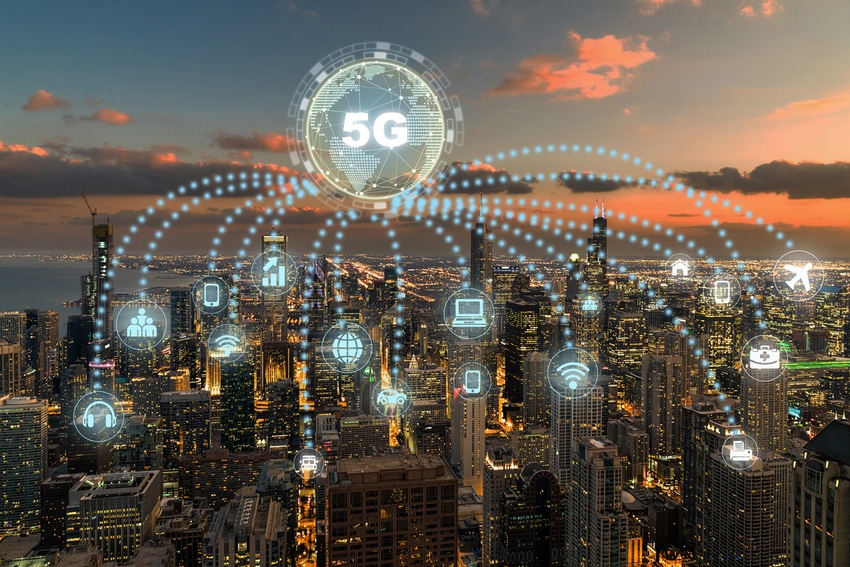AT&T to maintain 5G spend and push FWA in 2023
AT&T is starting 2023 on a positive note, having added more mobile phone customers than expected last year and with a new fixed wireless access offer in the pipeline.
January 26, 2023

AT&T is starting 2023 on a positive note, having added more mobile phone customers than expected last year and with a new fixed wireless access offer in the pipeline.
But the US telco still faces hefty bills for rolling out 5G infrastructure – unlike its major rivals it is not forecasting a capex cut just yet – and while its latest full-year results were fundamentally solid, its operating expenses took a hit as a result of a $24.8 billion write-down at its fixed-line and Mexican businesses.
However, much of the industry’s attention is on AT&T’s postpaid phone net additions, a key metric for mobile operators, and one that Verizon and T-Mobile US have already disclosed. It recorded 656,000 such net adds and while that’s 228K fewer than in the same quarter last year, its slightly ahead of expectations – Bloomberg predicted 640K, for example – and it positions AT&T closer to fast-growing T-Mobile than it does to struggling Verizon. As a quick recap, Verizon turned in 217,000 Q4 postpaid phone net additions earlier this week, which is at least a sequential improvement, while T-Mobile declared 927,000 in a pre-Q4 operational stats announcement in early January.
AT&T is understandably chipper about all this.
“Our consistent go-to-market strategy and the simplicity of our offerings drove continued robust, high-quality wireless and fiber customer additions in the fourth quarter,” said chief executive John Stankey, in a statement accompanying the numbers. “Over the last 10 quarters, we’ve demonstrated sustainable momentum in growing customer relationships, with 7.5 million postpaid phone net adds and 2.9 million AT&T Fiber net adds.”
AT&T added 280,000 fibre customers in Q4 and 1.2 million over 12 months, its fifth consecutive year with net adds north of 1 million, it said.
Its full-year postpaid mobile phone net adds were 2.9 million, which is actually only just shy of T-Mobile’s 3.1 million; Verizon though…just 201,000 after some negative quarters earlier in the year.
But while Verizon and T-Mobile have both committed to lower 5G rollout spend from this year onwards, AT&T is still ploughing hefty amounts of cash into its new generation infrastructure. Capital investment will come in at about $24 billion in 2023, according to the telco’s outlook, which is essentially the same as the $24.3 billion it spent last year.
But that comes as no surprise, given that AT&T said pretty much exactly that at its investor day last March.
“In 2022, AT&T expects capital investment in the $24 billion range. The company expects 2023 capital investment to be similar to 2022 levels and then to begin to taper to the $20 billion range starting in 2024,” it revealed. And it appears to be sticking to that plan.
“We haven’t updated the guide we provided at Investor Day. But clearly, we expect to trend down towards more normalized capital intensity as we exit this year,” said chief financial officer Pascal Desroches, according to a transcript of AT&T’s earnings call on Wednesday.
On that same call Stankey dropped a hint of a new service launch this year.
While T-Mobile and Verizon have made much of their fixed wireless access (FWA) services over the past few months, AT&T has been much more low key. Indeed, in describing FWA as “a tool in the toolbox that we can use to deal with opportunities in areas that are less densely populated,” Stankey perhaps implied that FWA remains something of an afterthought for AT&T. But something new is coming.
“We’ll have our next rendition of the product in the market this year,” Stankey said, without providing much in the way of further detail. “There will be places where we view it as being an acceptable substitute for fiber deployment.” Naturally, this still means less densely populated areas, and Stankey said as much, but he also talked about an opportunity in the business market, regardless of population density.
AT&T doesn’t share FWA customer numbers, and fundamentally doesn’t seem as excited about the technology as its two rivals. Nonetheless, we’re likely to hear a lot more about FWA in the US in 2023.
Get the latest news straight to your inbox. Register for the Telecoms.com newsletter here.
About the Author(s)
You May Also Like








.png?width=300&auto=webp&quality=80&disable=upscale)


_1.jpg?width=300&auto=webp&quality=80&disable=upscale)


.png?width=800&auto=webp&quality=80&disable=upscale)